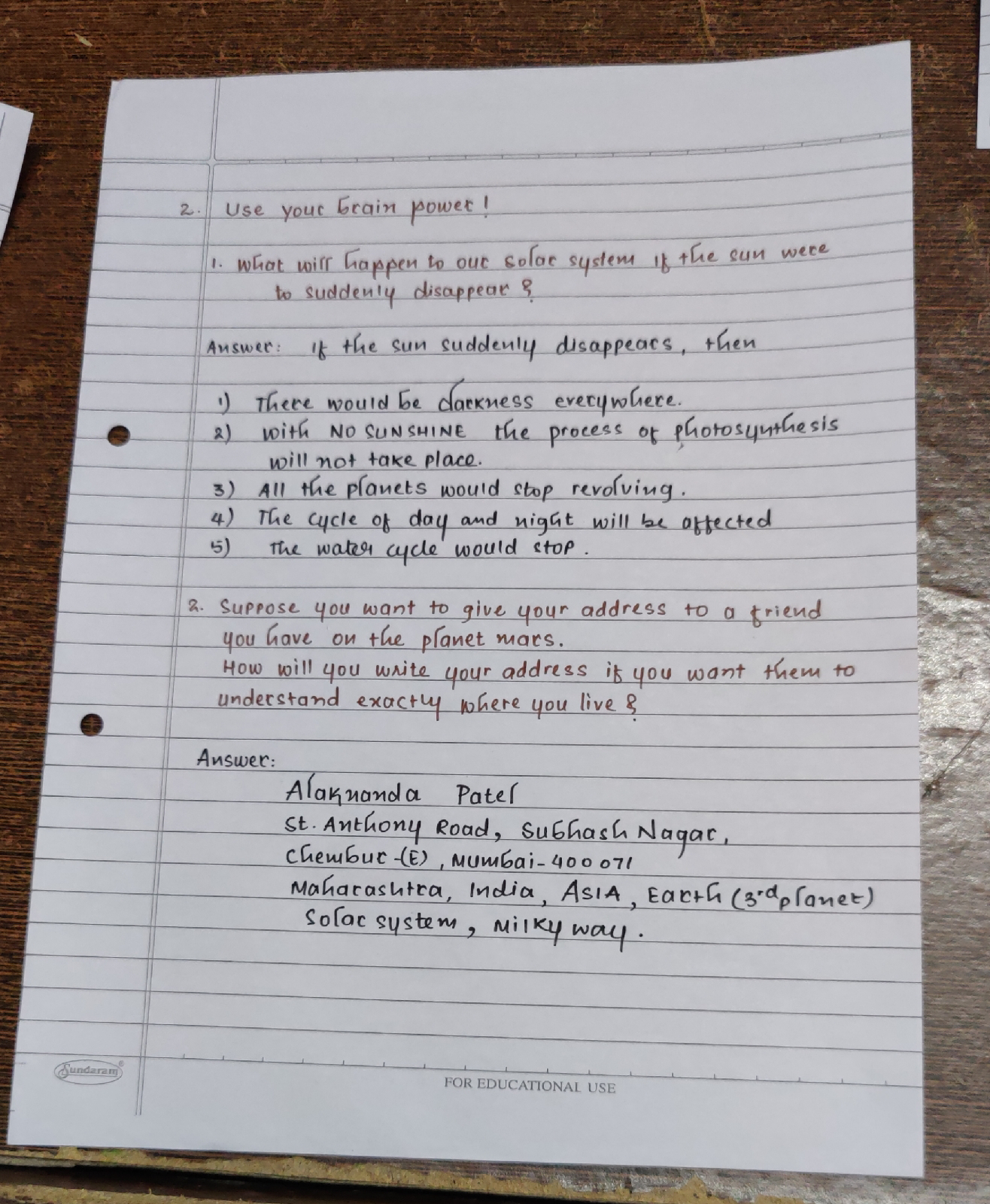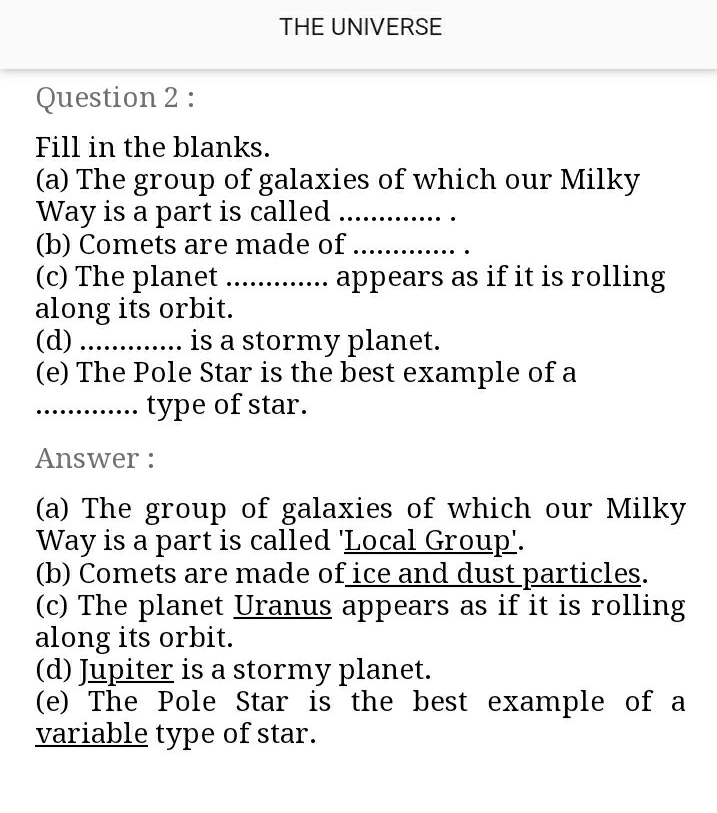Question 1:
Use Whittakar method to classify bacteria, protozoa, fungi, algae, prokaryotic and eukaryaotic microbes.
ANSWER:
Kingdom Monera
Absence of a well-defined nucleus or membrane-bound organelles
Absence of multicellular body designs; all are unicellular
Presence or absence of a cell wall
Autotrophic or heterotrophic mode of nutrition
Kingdom Protista
They are unicellular, eukaryotic organisms.
They can be autotrophic or heterotrophic.
Some members have cilia or flagella, which helps in locomotion.
Kingdom Fungi
They may be unicellular or multicellular, eukaryotic organisms.
Their body consists of mycelium, which is made up of multicellular filamentous hyphae.
Their cell walls are made up of tough, complex sugar called chitin.
They are saprophytes, which feed on dead organic material.
Kingdom Plantae
They are multicellular, eukaryotic organisms.
Cell wall is made up of cellulose and not chitin unlike that of fungi.
Most plant cells contain chlorophyll pigments. Hence, they are autotrophic.
They are non-motile.
Kingdom Animalia
They are multicellular eukaryotes.
Cell wall is absent in them.
- Chloroplast is absent in animal cells. Hence, they have a heterotrophic mode of nutrition.
Page No 5:
Question 2:
Complete the five kingdom method of classification using living organism prokaryotes, eukaryotes, multicellular, unicellular, protista, animals, plants, fungi. .png)
ANSWER:
.png)
Page No 5:
Question 3:
Find out my partner
| A | B |
| Fungi | Chlorella |
| Protozoa | Bacteriophage |
| Virus | Candida |
| Algae | Amoeba |
| Bacteria | Prokaryotic |
ANSWER:
| A | B |
| Fungi | Candida |
| Protozoa | Amoeba |
| Virus | Bacteriophage |
| Algae | Chlorella |
| Bacteria | Prokaryotic |
Page No 5:
Question 4:
State whether the following statements are true or false. Explain your statement.
A. Lactobacilli are harmful bacteria.
B. Cell wall of fungi is made up of chitin.
C. Organ of locomotion in amoeba is pseudopodia.
E. Tomato wilt is viral disease.
ANSWER:
A. Lactobacilli are harmful bacteria.- False
Lactobacilli are not harmful bacteria, infact they are found in gastrointestinal tracts of animals and humans. They are also an important part of dairy products such as milk, yogurt etc.
B. Cell wall of fungi is made up of chitin.- True
C. Organ of locomotion in amoeba is pseudopodia.- True
E. Tomato wilt is viral disease.- True
Page No 5:
Question 5:
Give answers.
A. State the merits of whitetaker's method of classification.
B. Write the characteristics of viruses.
C. Explain the nutrition in fungi.
D. Which living organisms are included in the kingdom monera ?
ANSWER:
- Unicellular and multicellular organisms are kept under separate categories.
- Autotrophs and heterotrophs are placed in separate groups.
- A separate kingdom was assigned to fungi because of its mode of nutrition.
- It is more natural than two kingdom classification.
- Prokaryotes are placed under a separate category of monera.
b. The various characteristics of viruses are:
- They are smaller and simpler than bacteria.
- They are ultra microscopic and visible only under electron microscope.
- They are considered to be on the boundary line of living and non-living things.
- They are obligate parasites and cannot live on their own.
- They cannot multiply on their own. They require living machinery to multiply.
- Viruses consist of genetic materials (DNA or RNA) surrounded by a protective coat of protein (capsid).
- Viruses are responsible for causing many dreadful diseases in plants, animals, and humans.
c. The mode of nutrition in fungi is saprotropic and they are called saprophytes. It is a mode of nutrition in which an organism obtains its nutrients from the decaying organic matter.
d. Organisms with following characteristics are inlcuded under the kingdom monera:
- Absence of nucleus and membrane-bound organelles
- Presence or absence of cell wall
- Can be either autotrophic or heterotrophic
- Are all unicellular and include mainly bacteria and blue green algae
Examples include bacteria and blue green algae.
Page No 5:
Question 6:
Who am I ?
A. I don't have true nucleus, cell organelles or plasma membrance.
B. I have nucleus and membrane bound cell orgenelles.
C. I live on decaying organic matter.
D. I reproduce mainly by cell division.
E. I Can produce my replica.
F. I am green, but don't have organs.
ANSWER:
A. I don't have true nucleus, cell organelles or plasma membrance. - Monera
B. I have nucleus and membrane bound cell orgenelles. - Protozoa
C. I live on decaying organic matter. - Fungi
D. I reproduce mainly by cell division.- Bacteria
E. I Can produce my replica. - Viruses
F. I am green, but don't have organs. - Algae
Page No 5:
Question 7:
Draw neat and labelled diagrams.
A. Different types of bacteria.
B. Paramoecium
C. Bacteriophage.
ANSWER:
a. Structure of bacteria

b. Structure of Paramoecium.png)
c. Structure of bacteriophage.png)
Page No 5:
Question 8:
Arrange the follwing in ascending order of size Bacteria, Fungi, Viruses, Algade.
ANSWER:
Viruses →Bacteria →Fungi→Algae




















